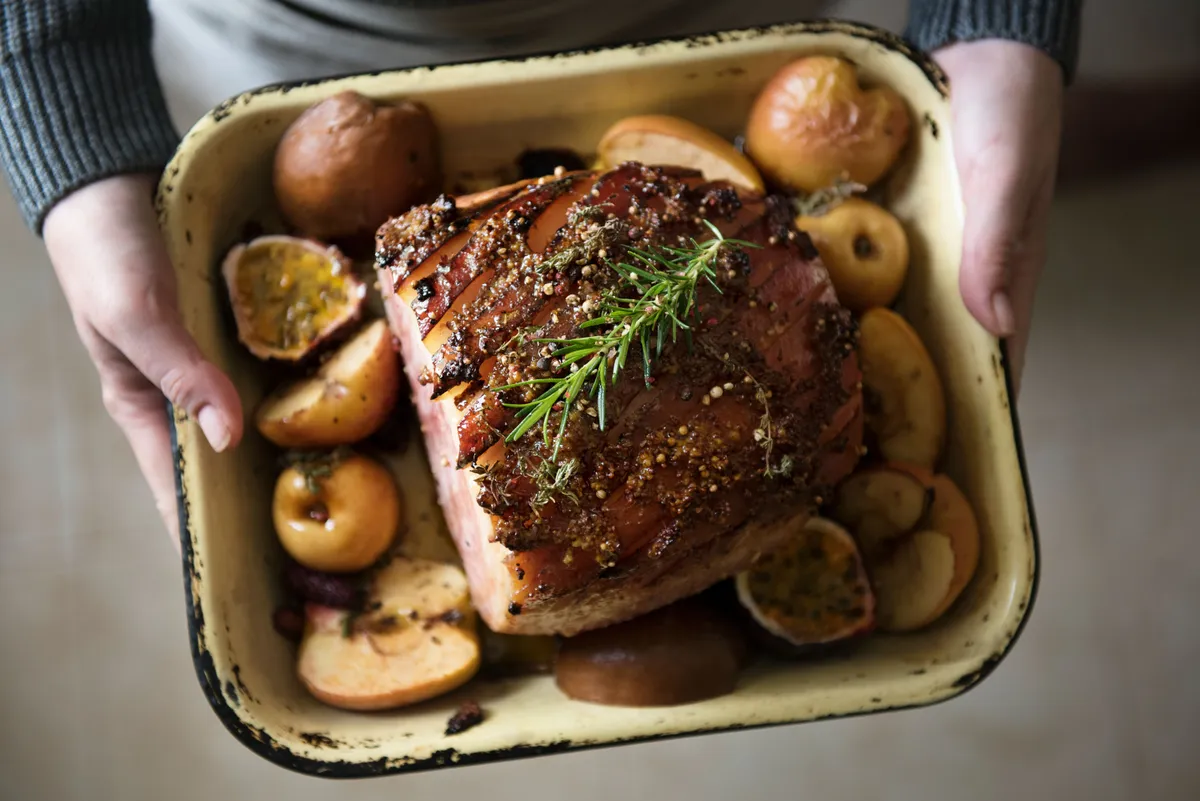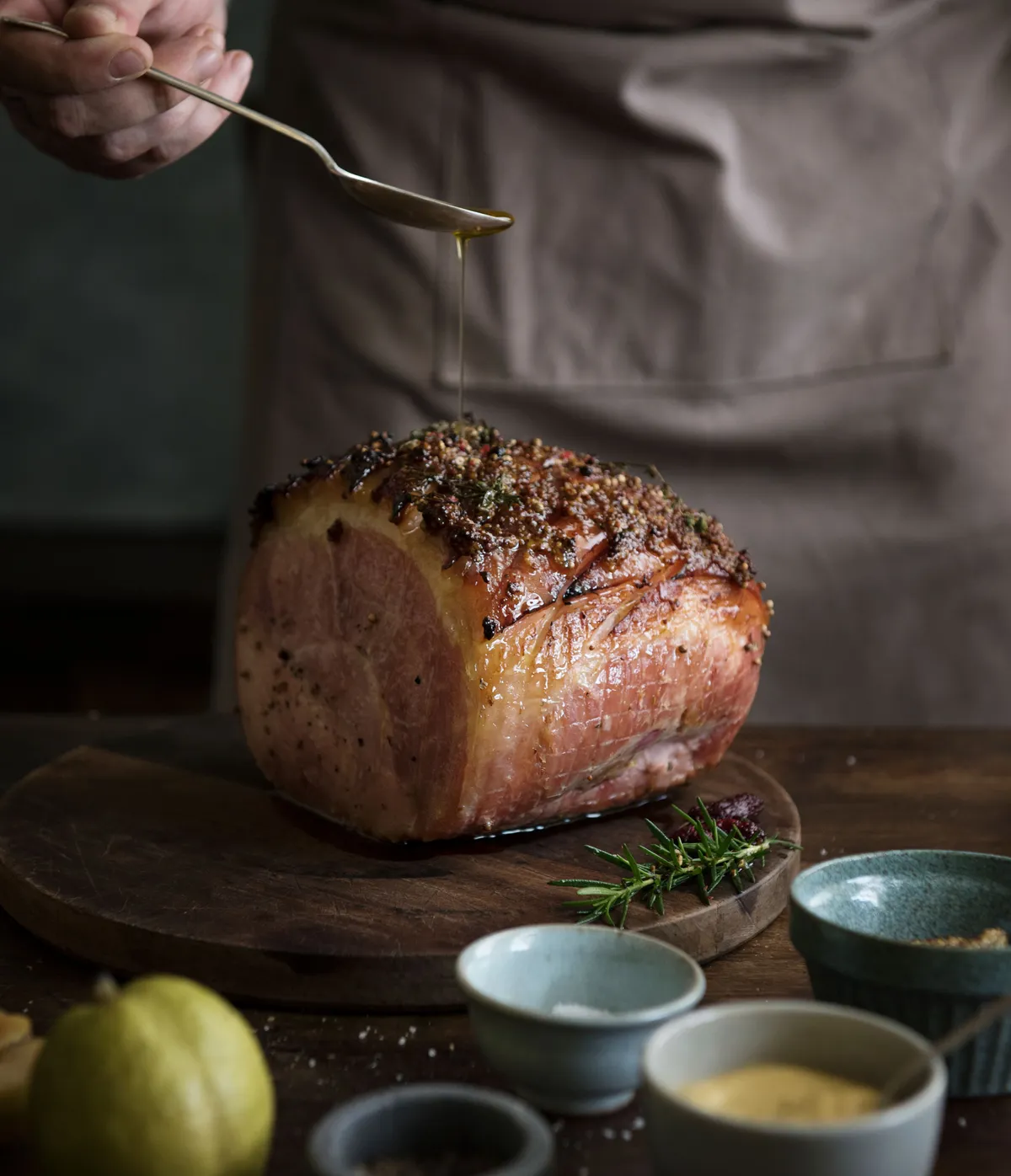Gammon is a boxing day staple, and while curing your gammon at home may be slightly tricky, you'll end up with a rewarding feast.
There are certain tips and tricks that will make the process easier, so why not give them a try?
Here are Steven Lamb's top tips for curing gammon at home, plus the best recipe for cider-cured Christmas gammon.
What is curing?
In the simplest of terms, curing is preserving and flavouring.
Salt is the common denominator between all known cured goods. It is the magical, potent mineral that draws the moisture out of the meat.
It is this moisture that attracts bad bacteria, which would eventually putrefy fresh meat without this intervention of osmotic action. This removal of liquid, initially by the salt and then by a period of air-drying, not only makes the meat safe to eat uncooked, it also intensifies the flavour by essentially making it less diluted.
Why cure meat for Christmas?
With all the bountiful supply of local artisan charcuterie producers to choose from, why should you make your own? Everyone can and should be producing simple cured products as a matter of course because they offer so much value to the keen amateur cook.

Curing meat is not just for Christmas; the gift is much greater than that. But there is little better than enjoying your own bacon on Christmas morning or delighting in the sticky deliciousness of a homemade ham on Boxing Day.
Curing tips
The golden rule
It only requires a minimum of 3% salt to the weight of the meat to cure it. So 1kg of pork requires 30g of salt to turn it into bacon. Anything less is only seasoning and not curing; anything more is getting too salty to taste. The length of time it takes to cure is the equivalent of three days per 500g; that means 1kg of pork would be ready in six days.
Air drying
Air-drying is a secondary process to dry-curing; the two go hand in glove. Meat is first dry-cured to remove enough moisture to cure and stabilise the meat. The second element of air-drying isn’t necessary but is all about maturation and flavour; the less liquid, the more concentrated and undiluted the flavour. When a piece of dry-cured meat has lost 30% of its original raw weight, you can eat it without cooking, as it is by then, completely inhospitable to bad bacteria.

It is possible to affect the conditions which allow for air-drying cured meat. The three main criteria are humidity, temperature and flow of air. You can air-dry cured meat without expensive kit; it can be as easy as finding a place to hang your products out of direct sunlight, where the temperature is comfortable and a flow of air can move across them. Think porch or outbuilding, a badly made shed or garage where the air can whistle through. A cellar would do as long as the air isn’t stagnant: it must have air flow even if it means using a desk fan.
Create the perfect conditions
To minimise the risk of flies and to maximise the natural elements of humidity, temperature and air flow, it is only really advisable to hang curing meat outside at the right time of the year. On average in the UK, the perfect conditions happen over the winter or roughly from late September to the end of March. The perfect conditions are:
1
Average temperatures between 10°C and 18°C
2
Average humidity between 70% and 90%
3
A constant flow of air
You can further the protection of the meat by using a ‘jambon sac’ or muslin wrapped loosely around it, or you could manufacture a meat safe: a wooden-frame box that has fine fly mesh instead of panels.
Recipe: boxing day cider-cured gammon

Steven Lamb's home-cured Christmas gammon recipe is easy to follow (Photo by: Rawpixel via Getty Images)There are few better partnerships than pork and apple. This dish employs the technique of brining, which might seem daunting to the uninitiated but is really simple and effective. In essence, a brine is a way of adding flavour and moistness into a joint of meat. The quantities here are for a small gammon leg joint, bone in or boned-out. Click here for the ingredients and method.
